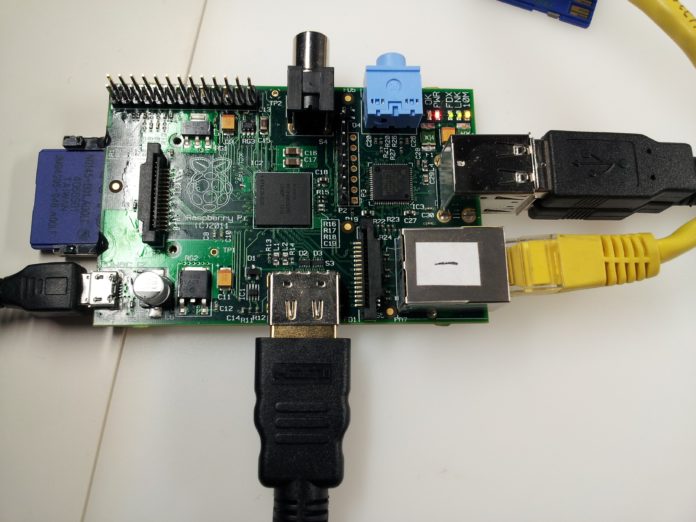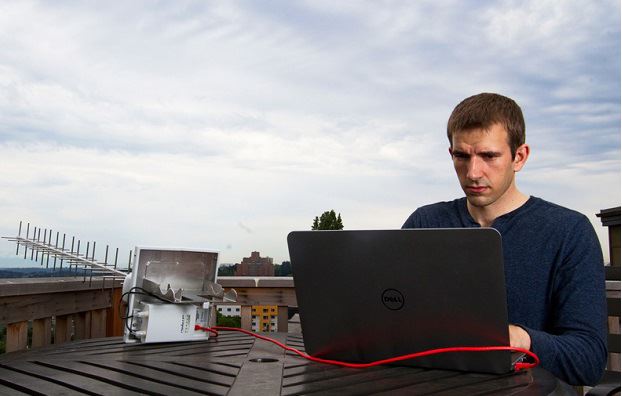
Anonymous Wi-Fi by Raspberry Pi
In the world of anonymity and online security, many people are searching for software to aid in their complete security measures. Until now. Security researcher, Ben Caudill, will be revealing a new gadget at this year’s Def Con Hacker Conference.

As we look into software security, we enjoy services such as paid VPN, anti-virus software, as well as firewalls. However, software will always have issues especially upon new updates as well as new software that you are not familiar with. Dawning into another century, security experts are starting research upon another form anonymity and security. The research is popularly known as Hardware Security or Physical Security. Meaning instead of, or replacing software, you can now utilize hardware devices to protect your network at both home and business.
Looking into hardware related security measures, Raspberry Pi is making a strong stand for itself. For those who are unaware of what Raspberry Pi is, Raspberry Pi is a “Credit Card” size computer that is low on cost and can plug into any monitor or TV. You can utilize standard Keyboards and mice to assist in programming and navigation of Raspberry Pi’s infrastructure.
The device known as “ProxyHam” in which will be presented at Def Con will actually put your IP Address 2.5 miles away from your physical location. The researcher is promising that those who are searching for complete privacy and anonymity will be delighted.
ProxyHam will operate by utilizing the “Long-Distance” Wi-Fi, as well as a 900 MHz radio connection between the device and your designated computer. With hopes of releasing to the public, Ben is aiming to have this device to transmit a wireless signal up to 2.5 miles away from your physical address.
If you are being tracked by another hacker, authorities, etc. and they end up cracking your IP guess what, they have your physical location…Or Do they? With ProxyHam you can set it up to 2.5 miles away and when/if they come for you, they will only find the ProxyHam keeping you safe and secured at your physical location.
If the ProxyHam does work, combined with a paid subscription for a VPN service, plus utilizing two or more ProxyHam’s for your network security, and routing through a firewall switch should provide you with absolute anonymity and security.
Yes you can utilize services such as the Tor Network and alternatives of Tor, but there will always be a breach and flaws in their security as they provide a direct connection between your computers IP and your physical location. Basically meaning that even through Tor or other services, if your IP is cracked and traced you are over with and the attacker has your physical location.
And that is where the Ben comes into play with his weapon of choice, the ProxyHam. This is still a form of proxy service, but on a more physical level. Instead of just using software on your physical computer at your physical location, ProxyHam routes all of the local traffic through a distance on a wireless network. This makes detecting the real, or true, traffic you are using become more difficult to track/crack.
Looking at this fascinating device, one of the antenna’s we see is the one used to connect to a wireless network source. The other two antennas we see are actually used to transmit the signal at a 900 MHz frequency. The user would have to plug in a 900 MHz antenna to their computer in order to pick up the signal.
Surprisingly enough, you can in fact purchase yourself a copy of the CanKit Raspberry Pi 2 the complete starter kit with Wi-Fi for $129.99. The kit comes with everything you need to get started, except for the additional hardware and software Ben used for his ProxyHam.
Ben Caudill informed WIRED that he is cancelling the project ProxyHam. Ben was not expecting the project to have resurrected any time soon. He was unable to provide any information as to why he is cancelling his project. All he said was that DefCon was not involved nor was it his employer as he runs his own company. He did state that it is frustrating not just for him, but for his team as well to stop all productions on project ProxyHam.
Read full WIRED Article Here!
Followers of the project are speculating the FCC had seized Ben from selling his invention as it actual violates laws that can control the use of radio spectrum. Ben has informed his followers that is not the case as they had no contact or issues with the FCC during the course of their project. But when Ben is asked about law enforcement regarding any breaches on the Computer Fraud and Abuse Act he simply replies with no comment.
You can develop your own version of ProxyHam by purchasing a Raspberry Pi computer which is connected to a Wi-Fi card and then purchase a small 900 MHz antenna. You can find all of the products on Newegg. You may also want to purchase a few SD cards as well.
Setting up the ProxyHam you will need to first connect the device to your desired wireless network. Once you have that connection established now you need to bridge the wireless connection as well as wired connections. With a little bit of “Google-Fu” power, you can set this up in a matter of minutes. Now of course you are going to need to get the 900 MHz base station but configuring the radio frequency is much harder than configuring your router as you can read about configuring the radio signal from here. You now need to set the radio to bridge mode as well. Once you have the connections and bridges established, now you can connect a large “Yagi” antenna to your ProxyHam. You can learn how to build one here. Now you just simply configure your base station and plug an Ethernet cable into your desired computer (Desktop/Laptop).
This is not recommended and I do not encourage anyone to build their own ProxyHam as this does conflict and you will be charged with the Computer Fraud and Abuse Act. This nice tool is illegal to own and even more so to sell. But so are drugs and that is going over well.
In essence to all of this information, it is possible to almost completely (if not completely) hide yourself from anyone attempting to spy and/or track you. This is done by building your own ProxyHam, using a VPN, and a Firewall Switch. However, obviously protecting yourself in this form is considered highly illegal. Why we are not allowed to protect ourselves is beyond my level of comprehension upon the government agencies.
This Article (How to be Anonymous on Wi-Fi over 2.5 Miles Away Using Raspberry Pi!) is free and open source. You have permission to republish this article under a Creative Commons license with attribution to the author and AnonHQ.com.







Can you replace the “Yagi” antenna link? It doesn’t seem to be working.
It is possible to crack Wi-Fi pass??
Everything is possible 😉
yes it is possible been there done that
Very very easily my friend.
How?because i’ve tested and i couldn’t…. I think someone did this to my WiFi.
Finally, we are doing and creating things that actually help people survive and protect themselves from this oppressive government. Kudos to all who have helped make this happen and more kudos to those that support this technology and keep the government bullshit at bay.
Everything is possible.
How does this device violate Computer Fraud and Abuse Act?
how does this device violate Computer Fraud and Abuse Act?
Very easily.
Nothing is untraceable. I don’t see why all the hoopla ?.
THis just makes it a little harder but I dont buy that it totally untraceable.
I don’t get why you do not just use a mobile UMTS stick with anonsim. If you think they can still trace you too exactly, use it in a commuter railway/outside. Cheaper + easier.
I don’t get why you do not just use a mobile UMTS stick with anonsim. If you think they can still trace you too exactly, use it in a commuter railway/outside. Cheaper + easier.
Cracking Wifi is very easy.
Can you please elaborate? I am fairly new to hacking. It would be much appreciated.
Note: If you purchased your computer in the store, its serial number and MAC address are linked to you data (cc#, name, address etc). Yes, websites and other software can read your parts SN and MAC. So you know…